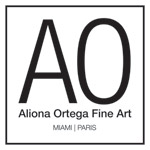Purvis Young was born in Liberty City, a neighborhood of Miami, Florida, on February 2, 1943. As a young boy, Purvis spent time with his uncle, Irvin Young, a well-known local sign painter who introduced him to drawing and painting. Purvis had a very limited formal education and did not attend high school.
As a young man, Purvis spent three years (1961–64) in prison at North Florida’s Raiford State Penitentiary for breaking and entering. While in prison Purvis realized the life of crime was not for him and made a choice to leave that world behind and pursue the life of an artist. He regained his interest in art and began drawing and studying art books. When released, he began to produce thousands of small drawings, which he kept in shopping carts and later glued into discarded books and magazines that he found on the streets. He proceeded to move into the Overtown neighborhood of Miami. Young became attracted to a vacant alley called Goodbread Alley, which was named after the Jamaican bakeries that once occupied the street; he started living there in 1971.
In the early 1970s, Young found inspiration in the mural movements of Chicago and Detroit, and decided to create a mural of inspiration in Overtown. He had never painted before, but inspiration struck and he began to create paintings on discarded pieces of plywood, nailing them to the boarded up storefronts on Goodbread Alley in Liberty City. Occasionally paintings would “disappear” from the wall, but Young didn’t mind. About two years after starting the mural, tourists started visiting the alley. Young sold paintings to visitors – tourists and collectors alike – right off the wall. The mural garnered media attention, including the attention of millionaire Bernard Davis, owner of the Miami Art Museum. Davis became a patron of Young, providing him with painting supplies as well. Davis died in 1973, leaving Young a local celebrity in Miami.
In the late 1990s and early 2000s, he explored other inspirations by watching historical documentaries about war, the Great Depression, commerce, and Native American conflicts and struggles in the United States. In 1999 the Rubell family, notable art collectors from New York, asked to purchase some Purvis art. Purvis explained the works in the studio were like a family and he didn’t want to split them up. With that said the Rubell’s purchased the entire current content of Young’s studio, a collection of almost 3,000 pieces. In 2008 the Rubell’s donated 108 of those works to Morehouse College. In January 2007, Purvis was selected as the Art Miami Fair’s Director’s Choice at the Miami Beach Convention Center and helped to establish a number of outdoor art fairs in South Florida that continue today.
Young suffered from diabetes, and toward the latter years of his life, he had other health problems, undergoing a kidney transplant in 2007. He died on April 20, 2010 in Miami, from cardiac arrest and pulmonary edema. He is survived by his partner Eddie Mae Lovest; his two sisters Betty Rodriguez and Shirley Byrd, brother Irvin Byrd, four stepdaughters, and 13 step-children.
In 2015, The Bass Museum of Art announced that it is donating almost 400 pieces of Young’s art to the permanent collection in the Black Archives History and Research Foundation of South Florida. The foundation is located in the Lyric Theater in Overtown.
Young found strong influence in Western art history and voraciously absorbed books from his nearby public library by Rembrandt, Vincent van Gogh, Gauguin, El Greco, Daumier and Picasso. His work was vibrant and colorful, and was described as appearing like fingerpainting. Reoccurring themes in his work were angels, wild horses, and urban landscapes. Through his works, he expressed social and racial issues, and served as an outspoken activist about politics and bureaucracy. He is credited with influencing the art movement terms Social Expressionism or Urban Expressionism.
PERMANENT COLLECTIONS
